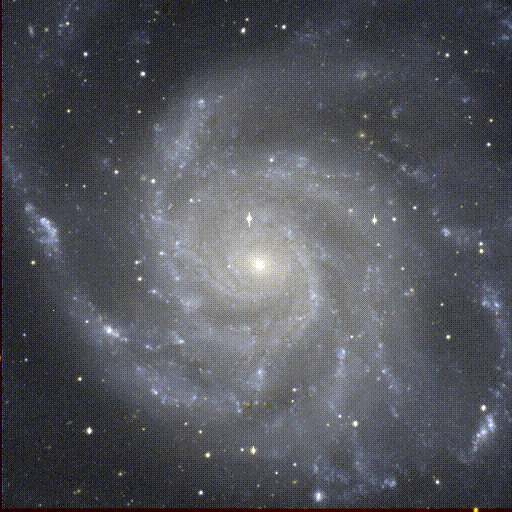
This is the nearby Sc spiral (in fact, perhaps the textbook example of a luminous so-called luminosity class I spiral) NGC 5457 or Messier 101, in Ursa Major. It has several extremely luminous star-forming (H II) regions in the outer spiral arms, some sporting their own NGC numbers. It dominates a small group of galaxies, with some of its neighbors such as NGC 5474 showing wear and tear attributed to the tidal effects of M101. M101 itself is further noteworthy for its extensive and lopsided distribution of neutral hydrogen gas, and for showing evidence of gas falling into its disk at high speeds. Cepheid variables suggest a distance of about 7 Megaparsecs (about 22 million light-years); at that distance some can just be picked up from the ground when the seeing cooperates, though the definitive study had to await the availability of HST.
This color composite is from B and R images (with synthetic V) taken during twilight with a Tektronix 2048x2048 CCD at the prime focus of the 4-meter Mayall telescope of Kitt Peak National Observatory. North is at the top and east to the left, for direct comparison with a chart or eyepiece view. The image has been block-averaged to 512x512 for this presentation, which uses a logarithmic intensity transformation to preserve information across a wide dynamic range. The field is 14.3 arcminutes square. A few of the brighter field stars saturated the CCD so strongly that some of the electric charge bled along columns, giving the vertical streaks from several stars.
Last changes: 5/2001 © 2001